► 2021 Jaguar E-Pace plug-in hybrid review
► 34-mile official range
► Imposing new touchscreen
More than two tonnes. Jaguar’s baby SUV with all the hybrid gubbins installed weighs close to half an Asian elephant.
Does it make a difference? Not to most people. Jaguar’s boffins have really thought about what this PHEV needs to be good at, and they’ve truly excelled themselves.
We’re talking around town: 30mph, cruising in near-silence on electric power. This is the E-Pace’s happy place. It’s serene. It’s comfortable. It’s flash enough to get the other school-runners all jelly. It’s obviously flawed in other places.
What’s new?
According to Jaguar the E-Pace has received a facelift but we suspect even some of Jaguar’s own designers weren’t made aware, so we’ll skip over it.
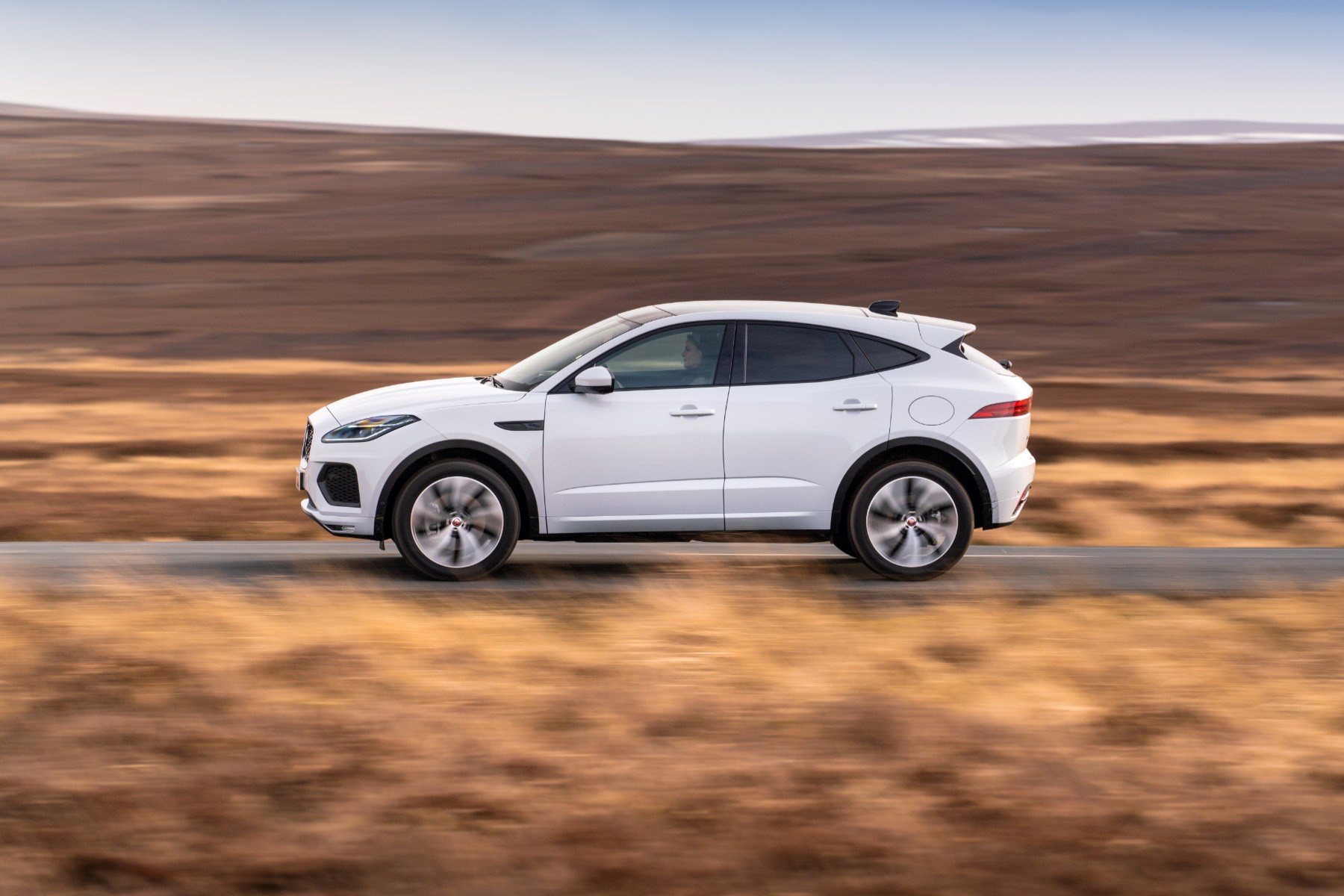
What is new is Jag’s P300e plug-in hybrid system. It promises up to 141mpg, 44g/km of CO2, and 34 miles of electric range. Take all of them with a massive pinch of salt. We covered about 25 miles of electricity in everyday driving.
Don’t get us wrong, it’s still an impressive system. It combines a 197bhp 1.5-litre three-cylinder petrol and a 108bhp electric motor into a neat AWD package.
Total output is 305bhp. It never feels as quick as its 0-60 time of 6.1 seconds would suggest. But that’s hardly the point of this plug-in system.
The 0-80% charging sprint is dispatched in 30 mins on one of those fast chargers you’ll find at motorway services, or around one hour and 24 minutes from a home charger.
The interior
Inside it’s very impressive. It feels super-modern without feeling too futuristic and tacky. Seat configurations include ‘Cloud Windsor leather’ which feel and look olde-worlde enough to sit in a Jaguar.
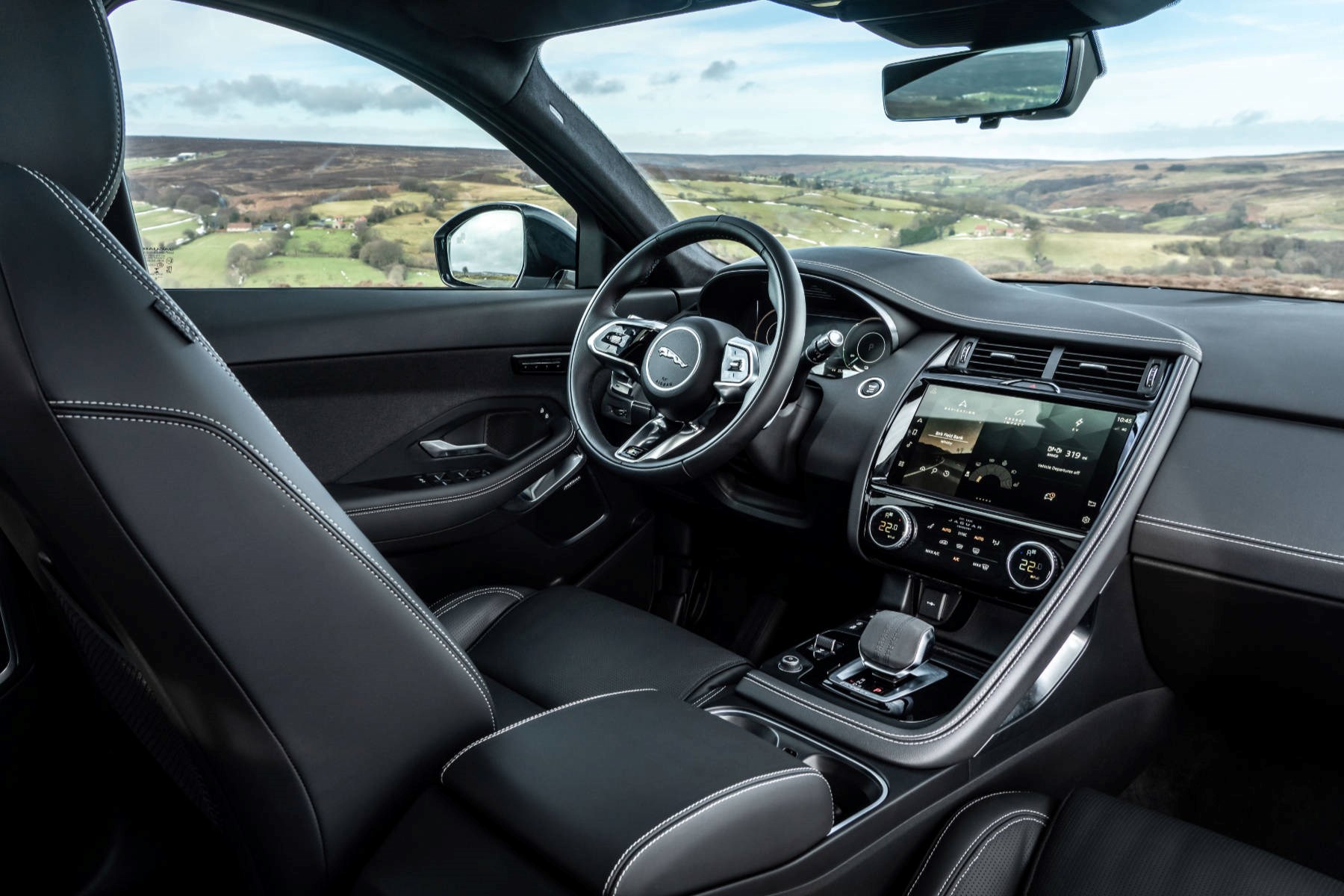
There’s a new 11.4-inch touchscreen with Jaguar’s latest Pivi software. It’s slick and intuitive. Anyone au fait with a smartphone will quickly make their way around this.
Highlights include over-the-air updates and the ability to connect two phones via Bluetooth.
EV-specific goodies include an EV button. You can order it to go into hybrid, battery-save and full-EV mode. They’re pretty self-explanatory and easy to use – much like the rest of the car.
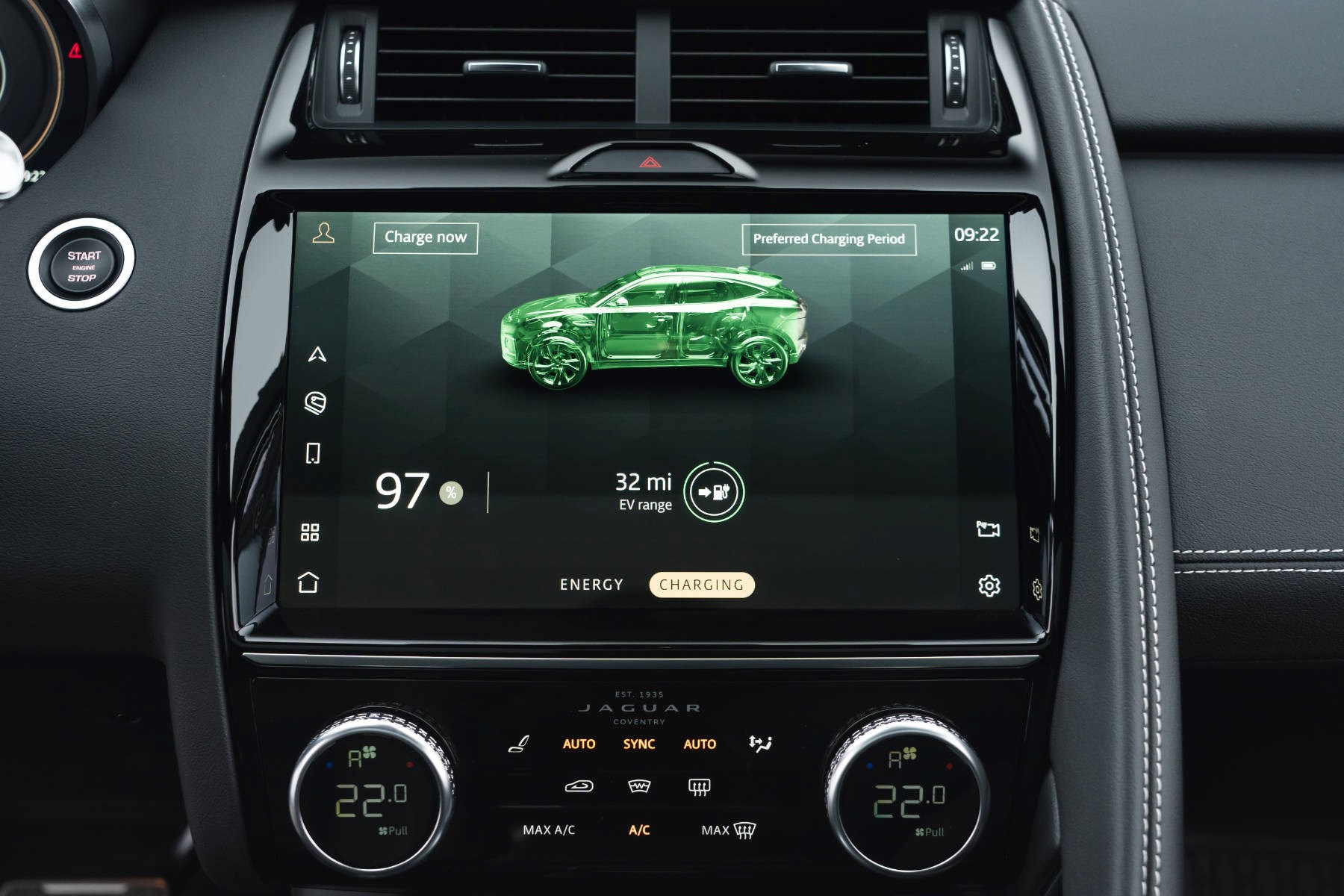
Intriguingly if you press down Jaguar’s dynamic controller it doesn’t override the EV mode. For instance, you can set it to full EV and full Dynamic. Odd combination. At least if you hoof the accelerator down hard enough the petrol engine does kick in.
Other oddities? Our test model R-Dynamic S model has a lap timer.
What about on the open road?
Back to the two-tonne elephant in the room. There’s no escaping the weight of this thing. At speed the lean can be felt. Not enough to induce sickness in rear-seat passengers. But still perceptible enough.
Road noise is definitely more prevalent at 70mph than at 30mph. Little annoyances of UK asphalt like grit and gravel are translated through the steering wheel too at higher speeds, whereas they are well muted at 30mph.
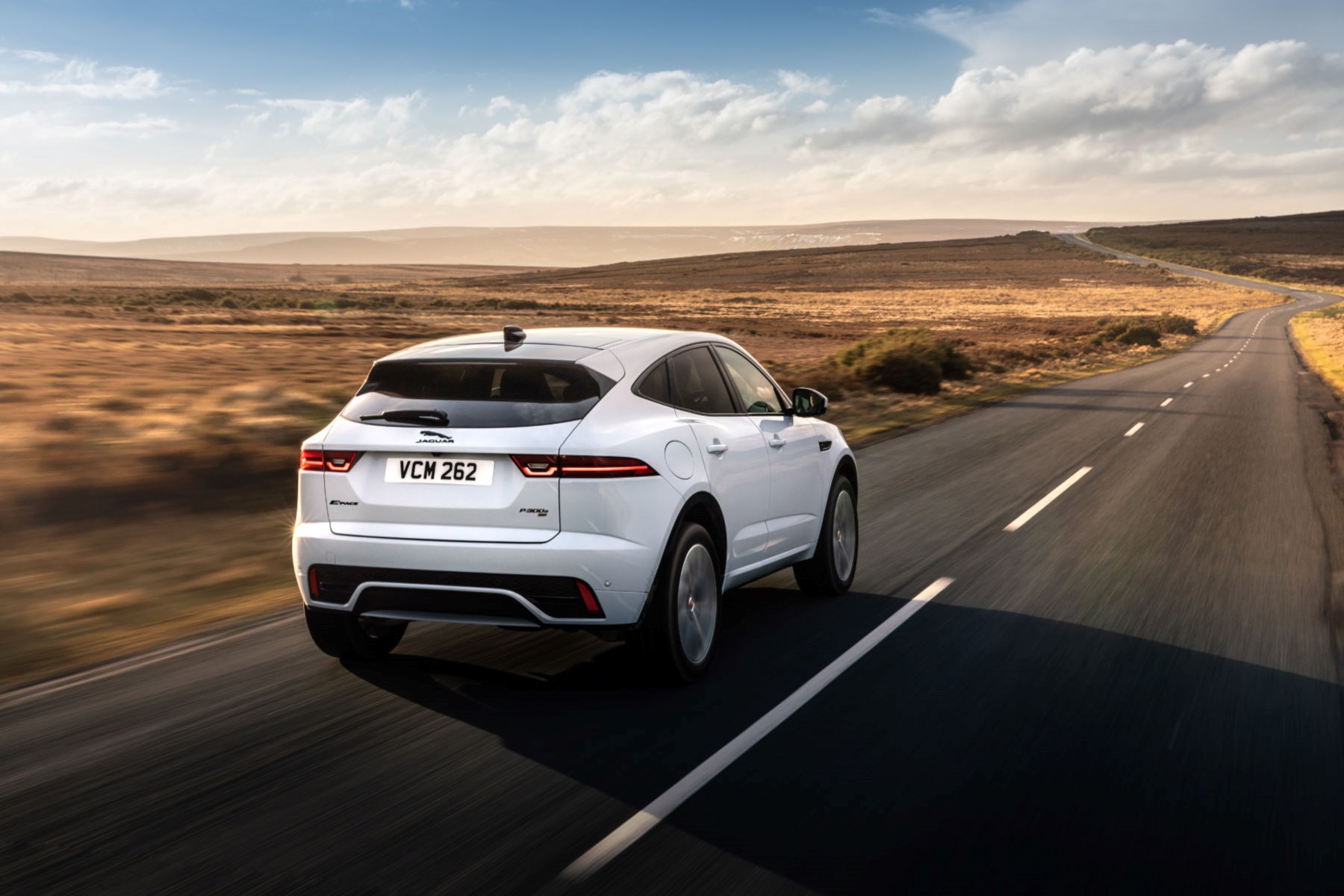
Like many a plug-in hybrid the brakes can range from ‘where are they?’ to ‘oh good grief why is my child in the front seat with me?’ with just a few millimetres of pedal pushing.
At least the gearbox is very hard to trick.
Jaguar E-Pace hybrid: verdict
Jaguar has really done its homework. Buyers willing to fork out an additional £6000 (compared with a similarly specified P200 AWD) to have 30 or so miles of electric range most likely won’t be doing mega mileages. So around town, this E-Pace is brilliant.
Dare we even bring up the cliched school run? It’s perfect for that.
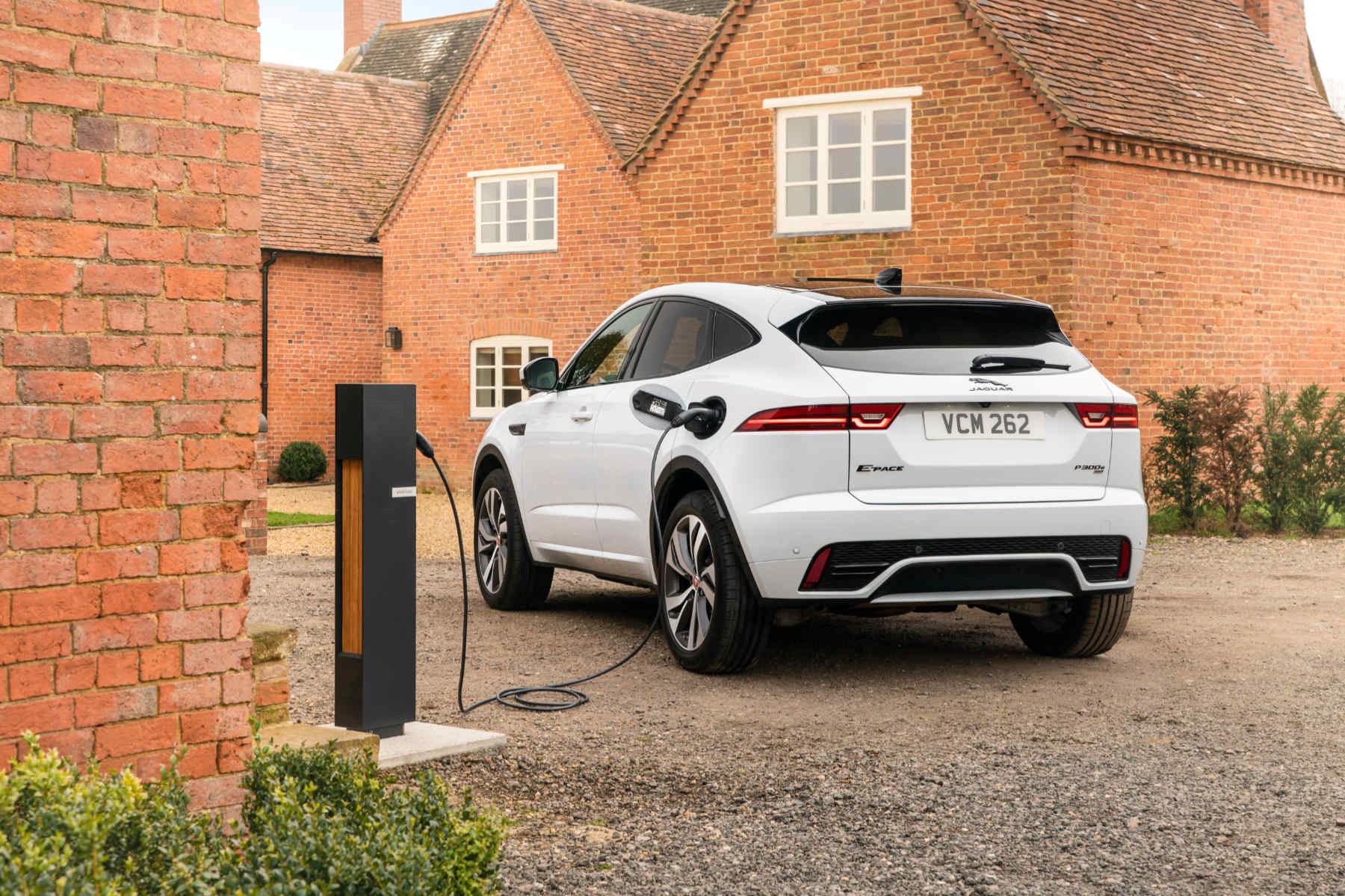
People who won’t regularly plug-in are better off with a petrol or diesel. To be fair to Jag that isn’t something unique to the E-Pace.
The latest interior makes it feel posher than ever, and it is a lovely thing to spend time in.
Look at it without context and it’s a brilliant product. The problem is the competition from within the company.
The Evoque is available with the same powertrain, for broadly the same money. The infotainment isn’t as modern…but it’s better looking on the outside with a more wantable badge.